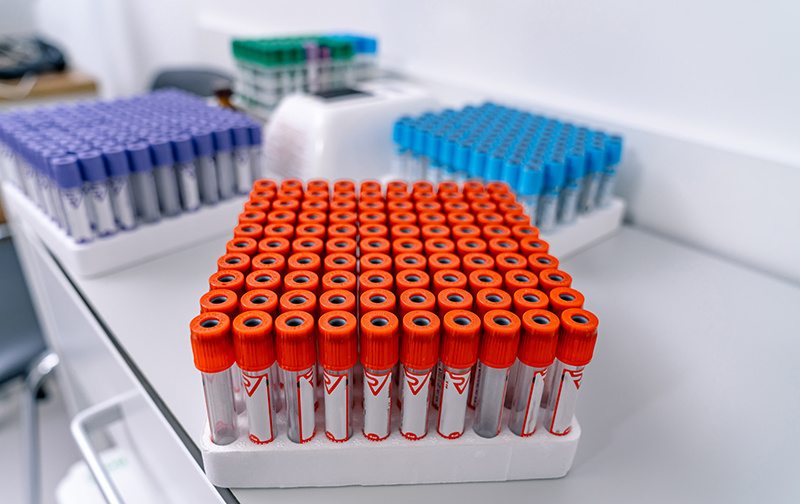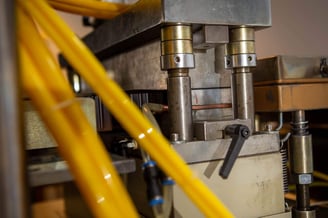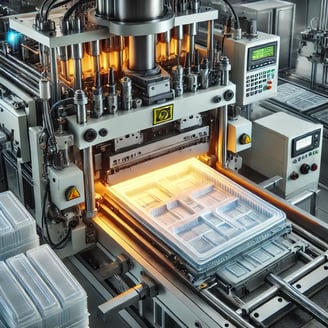4 Types of Lab Trays and When You Should Use Them

If you’re operating a research or medical lab, you likely already know just how important it is to maintain an organized environment. Without organization, a lab will quickly become chaotic. The key to preventing this is likely much simpler than you think. In fact, it’s nothing more than a well-placed lab tray. Here’s everything you need to know about the many types of lab trays, their place in your lab, and Ready-Made’s variety of solutions.
Why Do You Need a Lab Tray?
Simply put, lab trays are the easiest way to organize your space. For a lab to function as it should, everything must be meticulously organized and clinical. People need to know where their equipment and research samples are, and they need to be able to access both without any fuss.
A clean, clinical laboratory setting like this simply doesn’t work without tools and guidelines for organization in place. Lab trays can be used to help foster this organization, ensuring that experiments, procedures, and the like run as smoothly and safely as possible.
Why Thermoformed Plastic Trays Work Best
When looking for lab tray solutions, you’ll likely come across a wide variety of material options. Some of the most common options include metal, glass, and the one we’ll be primarily discussing thermoformed plastic.
Thermoformed plastic products like those we produce at Ready-Made have a number of advantages over other material options. First and foremost, they’re by far the most affordable option out of the three we presented. Thermoformed plastic lab trays have performance that matches or exceeds the alternatives, and are significantly more affordable.
That brings us to the second point: durability. Plastic lab trays are extremely durable and are designed to be used for years to come. Unlike glassware, they won’t shatter, and unlike metal, they won’t deform if they are bent or become rusted. This affords plastic lab trays a much greater degree of longevity than the alternatives.
Finally, there’s the matter of weight. Glassware as a whole, for example, is extremely heavy. Some metal equipment might be lighter, but it’ll still almost always be heavier than plastic. In an especially active lab setting, it helps to have lab trays that can easily be moved. The heavier the tray, the more unwieldy it becomes, and thus is more likely to cause a mishap. Plastic trays are much lighter than metal or glass, so they’re perfect for lab use.
Types of Lab Trays and Their Use Cases
As you continue to look for the perfect lab tray, you’ll likely notice an astonishing number of configurations and types of trays available for purchase. Each of these trays has a unique purpose and place in your lab, so be sure you know which ones your lab needs.
1. Spill Trays
Spill trays are exactly what they sound like: trays designed to catch spills. Usually, they look like shallow pans with relatively flat bottoms. Though not intended for extremely heavy spills, they’ll help keep your floors clean in the event of mild to moderate spills. They’re a key part of lab safety in many cases, especially if an experiment or procedure is dealing with strong acids, bases, or other hazardous chemicals.
When you should use spill trays:
- Your procedure or experiment is dealing with a lot of fluids. Especially important if dealing with bodily fluids or other biohazards.
- You plan to handle corrosive or toxic chemicals. Many types of plastic are highly resistant to strong acids and bases due to their strong chemical bonds. However, you should confirm that your plastic lab trays are, in fact, acid-resistant before using them in the lab.
2. Flat Trays
Flat trays are a basic form of lab tray, and also the most versatile. They’re designed similarly to spill trays, albeit not as shallow. Whether or not you’ve met all of your lab tray needs, it never hurts to have a few extra flat trays lying around. If one of your trays is lost, damaged, or otherwise rendered unusable, a flat tray will make the perfect substitute. Of course, they’re useful in their own right, and can be placed anywhere necessary throughout the lab.
When you should use flat trays:
- Can be used for many purposes. They can even be used to replace other types of trays in a pinch.
- Any basic tasks around the lab that you can think of. Temporary storage and organization come to mind.
3. Sample Trays
In any lab setting, it’s important to keep your samples organized and isolated from one another, and follow proper procedure throughout the process. Sample trays are designed to help you do just that. They feature a large number of partitioned-off parts, each of which can fit its own sample. This allows you to avoid cross-contamination and ensure completely accurate results.
When you should use sample trays:
- You’re dealing with a large number of research samples that need to be isolated.
- You need a way to visually organize each of your research samples.
4. Storage trays
If you’re not currently using a sample, chemical, or tool, you need a place to safely store it so it won’t interfere with other experiments. Plastic storage lab trays from Ready-Made give you a way to do just that. They’re built to keep your lab materials safe, sound, and out of the way when not actively being used. This allows you to clear up space in the lab without risking lost equipment or damaged samples.
When you should use storage trays
- You need to organize lab materials not currently in use.
- You want to keep the lab cleaner and prevent accidents caused by unsecured materials.
Finding the Right Lab Tray Distributor
Of course, when you’re looking for plastic lab trays, you shouldn’t have to settle for anything less than the best. If you’d like to learn more about the many applications of plastic trays in the medical field or purchase some for yourself, feel free to send us a message at Ready-Made today!




